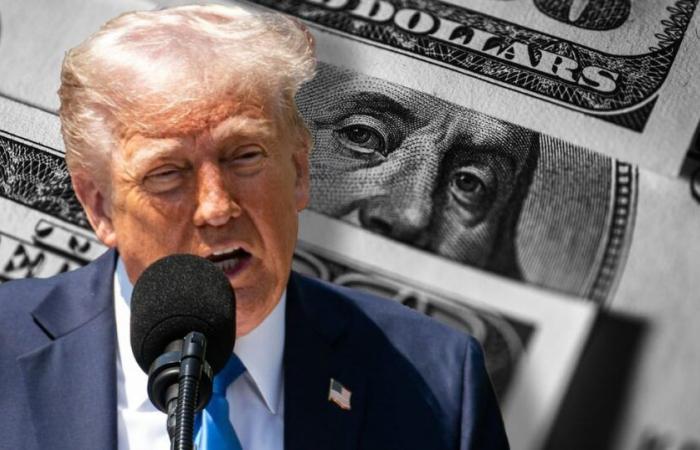Speculative operators have become more pessimistic regarding dollar that at any other time since last September, since concerns about US assets They continue to circulate despite a recovery in the stock markets.
The data published on Friday show that coverage funds, asset managers and other speculators increased their Betting against the dollar During the week that ended on Tuesday, April 29, according to the Future Negotiation Commission of Raw Materials (CFTC).
These Bets have been accumulating for several weeks, and the operators that the CFTC follows maintain, together, a position of approximately 17 billion dollars linked to the weakening of the dollar.
On Friday, the Bloomberg Dollar Spot index fell 0.4 percent, which places it in its fourth week of the last five.
The commercial policies of President Donald Trump have sent shock waves to financial markets and have undercurred the status of the dollar as sure shelterpushing operators to bet against the dollar and to allocate funds away from US assets after years of accumulating them.
Although many markets have recovered in recent days thanks to signals from commercial agreements and economic strength, the issue of “selling the United States” seems to remain intact and the dollar indicator has now dropped more than 6 percent in the year.
They foresee greater losses for the dollar after the Fed decision
The risk reversals at a week and a month of the Bloomberg Dollar Spot index point to expectations of greater dollar losses before and after the decision on the interest rates of the Federal Reserve on May 7. Operators still pay more for the sales options that are betting on a weaker American currency than for the purchase options that the dollar will rise next week and month.
On Friday, employment data of the United States as expected showed that the tariff uncertainty has not yet affected the labor market of the country, which led the operators to cut bets on imminent cuts in interest rates.
Even so, the operators sent money to foreign exchange outside the United States after China indicated their willingness to negotiate tariffs. The Australian and Neozylelands dollars were among the best performance of the group of 10 on Friday, with an advance of around 1 percent.
“It seems that the market shows some optimism in the news about China,” said Aroop Chatterjee, managing director of Macro Strategy and emerging markets at Wells Fargo in New York. “It is evident that long positions in dollars compared to Asian currencies are getting rid.”






